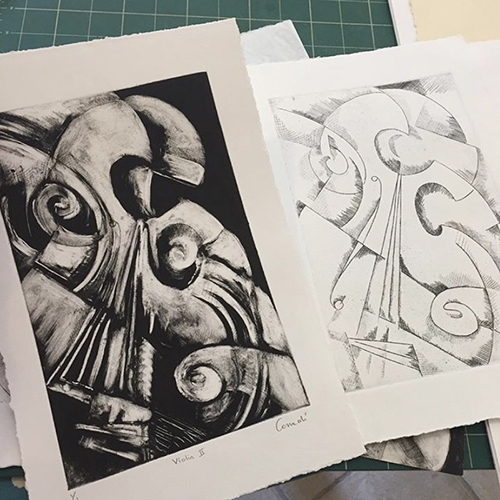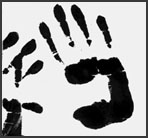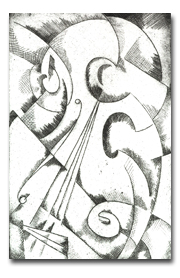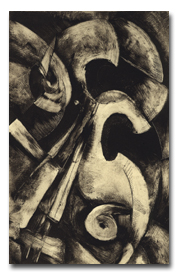
Also known as the most painterly method among the printmaking techniques , monoprints and monotypes are essentially printed paintings.

The monoprint is the most basic type of print which can be as simple as a footprint or handprint. |
The characteristic of these methods is that no two prints are alike; although images can be similar, editioning is not possible. The appeal of the monotype lies in the unique translucency that creates a quality of light which is very different from a painting on paper or a print, and the beauty of this media lies also in its spontaneity and its combination of printmaking, painting and drawing mediums.
A monotype is created by applying ink onto a metal or plastic surface then removing the ink partially or wholly for the lighter and white areas to create an image. This process is carried out using brushes, toothpicks, cotton swabs, foam rubber, fingers, etc. It is also possible to start with a clean plate and apply the ink in various ways, as if you were painting an image. If the ink is too thickly applied it will spread from the pressure when printed, forming a blot. If too thin it won't show up at all. When the picture on the plate is finished, it is run through an etching press with dampened rag paper to form a unique one of a kind print. Almost all the ink transfers to the paper so it is not possible to make more than one print, hence the prefix mono, which is a latin word meaning "one".
Q : If the goal is to produce a single painted image, why make a monotype instead of a painting?
A : It would certainly seem pointless to produce an image as a unique print. However, monotypes combine the spontaneity of printed inks and paper, creating a surface that is unlike any other art form. Certain results cannot be obtained when painting on canvas.
Q : Is there a difference between a monotype and a monoprint?
A : Yes. Although these two terms are often used interchangeably, there is a big difference between one and the other:
The process of monoprinting and monotype printing is the same, but when doing monotypes the artist works on a clean and unetched plate; with monoprints, however, there is always a pattern or part of an image which is constantly repeated in each print.
Artists often use etched plates which are then reworked by applying ink in desired areas and print that image several times, but each time the result will be different because the wiping changes and the brushstrokes will vary from impression to impression.
Texture can be added with lace, leaves, fabric or even rubber gaskets.
Several unique effects can be achieved with these two techniques, so experimentation is also fundamental when working with monoprints and monotypes.
| A simple etching transformed into a monoprint Using an already etched plate, the artist first rolled a thick layer of ink over the entire surface of the print, then using brushes, cotton swabs, sponges and fabric, the artist worked over the image, wiping or adding ink. There are three main methods of making a monotype:
|

Basic etching, printed before additional ink was applied with brushes |

Final print Rapsodia, 2001 © Colleen Corradi |
You can be interested in : The history and development of monoprints
